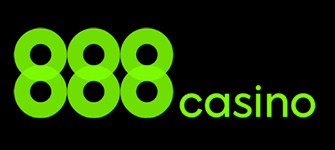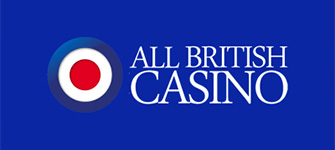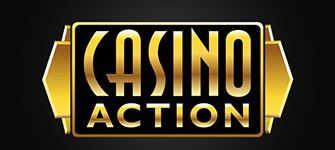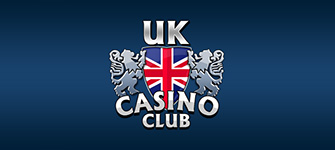Single Deck Blackjack Rules
Players who are looking for better odds, should definitely try the single-deck blackjack variant. Playing with only one deck gives the player an unprecedented opportunity to be in tune with the game and follow its development more closely. Not many casinos like playing with only one deck, which is why there are very few landbased venues that still have single-deck tables on their floors. You can always play single-deck blackjack online but first you need a glance at the rules.
Playing with a single deck puts the house at a greater disadvantage. That is why some compensatory rules were created just for these types of situations (to level the field so to speak). But instead of going over each of these individually, let’s talk about the general/standard rules that all blackjack games have in common, and try to point out the new stuff as we go along.
- ✓ Single-Deck Blackjack
- ✓ Played at Online Casinos
- ✓ Card Values
- ✓ Basic Moves
- ✓ Winning Hands and Payouts
- ✓ Insurance
- ✓ Strategy
- ✓ House Edge
The Deal in Single-Deck Blackjack
In landbased casinos, single-deck games are called pitch or hand-held games since the dealer holds the pack in their hand and pitches the cards towards the players. A single-deck table can accommodate anywhere between one and seven seated players.
As becomes obvious by the variation’s name, such games utilize one normal pack, containing 52 cards in total. A single-deck in play works to the advantage of the player since it cuts the house’s edge slightly.
Before the game begins, the dealer would shuffle the cards manually and ask one of the seated players to cut the pack. A card is then burned, i.e. removed from play and placed at the bottom of the deck. Next, all participating players post chips in their corresponding betting boxes and the round of play commences.
At the start of a round in single-deck blackjack, the dealer would deal two cards to themselves as well as to each participating player. The dealer receives their first card exposed while the second one is dealt face-down.
The players’ starting two cards are all dealt face-down in single-deck blackjack. All hidden cards at the table are referred to as “hole” cards, including those of the players. The dealer can peek under their hidden card when their exposed card is an ace or a ten-value one to check for blackjacks.
Once everyone has been dealt their two cards, play commences at the leftmost side of the dealer and proceeds from there in a clockwise direction. The leftmost seat is known as the first base while the middle and rightmost positions at the table are called shortstop and third base. Respectively, the third-base player is the last one to make playing decisions on their hand.
Each participant then uses hand gestures to show the dealer what playing decisions they want to make on their hand. We explain these decisions in more depth a little later in the article. Once all seated players have made their decisions, it is time for the dealer to complete their hand. Then they would pay out the winning hands and collect the chips from losing hands off the layout.
Unlike patrons who can choose to play their hands however they want, the dealer makes no decisions but abides by the casino’s fixed rules, either standing on all 17s or standing on hard 17 only and hitting soft 17.
Table etiquette in hand-held games like single-deck blackjack requires players to conform to certain rules, most of which aim at preserving integrity and hindering cheaters. Unlike multi-deck shoe games, here you have the right to touch your first two cards but must do so using one of your hands only.
The cards should remain in plain sight at all times. Players cannot remove them from the table or move them close to their bodies. In single-deck blackjack, the cards you subsequently draw to your hands remain on the layout, i.e. you are prohibited from removing them from the table or picking them up. If you exceed 21 during the round, you must expose your cards immediately.
Single-Deck Blackjack when Played at Online Casinos
Up until now, we discussed the dealing procedure and the etiquette players will encounter whenever they join single-deck blackjack tables in brick-and-mortar casinos. Things are a bit different if you decide to play this version of the game online from the comfort of your home.
The biggest difference you will notice when playing online is that the virtual dealer will deal both of your cards exposed as is the case in shoe games, played with multiple decks. Most of the single-deck variants you will come across online are hole-card games, meaning that the dealer’s first card is dealt face-up.
The second one remains hidden from view until the very end of the round when you have made your playing decisions. When the exposed card is an ace or a ten, the virtual dealer would normally check their hole card for a blackjack.
Other than that, you have a choice from the same playing decisions as those when playing single-deck blackjack in landbased casinos. The only difference here is there is no need to pay extra attention to all the etiquette rules.
You calculate your hand total by adding the values of both cards. If you have an 8 and a 3, your total is 11. You have 11. Respectively, your playing decisions should be based on your hand total and the value of the dealer’s exposed card.
Card Values
By now, you should know that most blackjack variants use 4, 6, or even 8 decks in a single game. Single-deck blackjack uses only 1 standard, 52-card deck. There are four suits – clubs, diamonds, hearts, and spades but these are overall irrelevant in blackjack. Suits are not taken into account unless players make specific side bets. The ranking of the cards in ascending order is as follows – A, 2, 3, 4, 5, 6, 7, 8, 9, 10, J, Q, K.
An ace can be either 1 or 11, depending on the player’s preferences. Hands containing an ace that can be counted as 1 or 11 are called soft hands. These are considered advantageous because you cannot go over 21 by drawing one extra card. An example is a soft hand of A, 5 whose value can be either 6 or 16. All face cards (King, Queen, Jack) are worth 10 points in value. The rest are counted as indicated by the respective number of pips they have.
Basic Moves
Hit – A hit is when you ask the dealer to hand you another card. You can hit as many times as you wish, as long as you stay below the 21 mark. *Note that drawing any additional cards will change your sum total, so be careful not to bust.
Stand – You are not obligated to draw (hit) any additional cards if you don’t need/want to. Once you are done making changes to your total, you can simply stand and let the dealer know not to give you any more cards.
Double Down – You can double down after being dealt your two cards, but before you hit or stand. According to Single Deck rules, in order to double you must have a total of 9,10 or 11. Such is the case in most single-deck variants available for online play, including Microgaming’s version of Vegas Single-Deck Blackjack Gold. Some variations, like Betsoft’s Single-Deck Blackjack, are even more restrictive, allowing players to double only on totals of 10 and 11.
However, it is possible to find online single-deck variants where doubling is possible on any two starting cards. Such is the case in Play’n GO’s version of Single-Deck Blackjack. To double, you put a second bet next to the original one (single-deck rules state that it must be of equal value) and point one finger down like you are looking for something in the dictionary.
The dealer will give you 1 additional card, and you will be denied any more hits for the duration of the round. If you win – you double your winnings, if you lose – you double your losses. In many cases, players cannot double down after a split in single-deck variations although you can find online games where this move is allowed.
Split – When a player has two cards of equal value (either a pair or two 10 cards), he can choose to ‘split’ said cards into two separate hands. The dealer will then hand out one additional card to each hand, so there are 4 cards total (2 hands respectively).
According to single-deck rules, a player can split only once, and he cannot double down after a split. Splitting aces will result in one additional card only as single-deck players are generally prohibited from hitting split aces. A ten-value card dealt next to a split ace counts as a regular 21, not as blackjack. The majority of online single-deck variants prohibit resplitting. Players can split only once to form no more than two hands.
Surrender is hard to come by in single-deck variations of blackjack although some versions do support this rule. You will find late surrender in Single-Deck Blackjack by Play’n GO. Late surrender enables you to forfeit your hand after the initial deal, in which case you get half of your bet back. Surrendering is recommended when players are dealt weak starting hands like hard 16 or hard 15 against strong dealer upcards like aces or tens.
Winning Hands and Their Payouts
The object of any blackjack game is to get a blackjack. Also called a natural 21, a blackjack comprises an ace next to a ten-value card after the initial deal. This is an automatic winner for the player unless the dealer has also obtained a blackjack. In this case, the two blackjacks push and the player neither loses nor wins any money.
In fact, this applies to all hands that push, not only to blackjacks. Bets are returned without there being a winner/loser. As for the winning criteria, there are three ways to beat the dealer in single-deck blackjack:
- You have a blackjack against a busted dealer or a dealer with any other hand value. There are two payouts for player blackjacks across different single-deck games. Some online variants, like Play’n GO’s Single-Deck Blackjack, pay at odds of 6 to 5 for this hand.This is a reduced payout where you get 1.2x your original wager, which increases the house edge by 1.39%. To avoid this, we recommend you seek online single-deck games that pay for blackjacks at the standard odds of 3 to 2. Your blackjacks will earn you more money this way (1.5x times your initial wager).
- The second way to win is to outdraw the dealer with a higher hand total, in which case the payout is even money (1 to 1).
- The third way to win is if the dealer busts but your hand total does not go over 21. You again win at even odds in this instance.
Insurance in Single-Deck Blackjack
If the dealer has a ten-value card (Jack, King, Queen, or a 10), or an ace showing, they can peek under their hole card to check for a blackjack. If they indeed have a blackjack, you automatically lose unless you have blackjack as well.
However, if the dealer’s upcard is an ace, they will offer you to buy insurance and will do so before peeking under their hole card. When accepting insurance, you must make an extra wager to the amount of half of your initial bet.
If the dealer has a blackjack, then the player is paid 2 to 1 for their insurance wager but loses their main bet unless they, too, have a blackjack. Note that insurance is an independent side bet that you put next to your original bet. If the dealer does not have a blackjack, you lose your insurance and keep playing your original hand as usual.
Single-Deck Blackjack Strategy
Blackjack is one of the gambling games with the lowest house edges you can hope to find on the casino floor. However, this statement is valid only on condition you use basic strategy so that you know how to play your hands optimally. Before you grab your strategy card, we should warn you that some of the optimal playing decisions in single-deck games do not coincide with those in multi-deck shoe blackjack.
There are a few strategy adjustments you need to take into account when switching from multi-deck to single-deck games. We outline some of them below. Just keep in mind these moves are optimal in single-deck games against a dealer who stands on all 17s.
- You hit hard totals 5 through 7 against any dealer upcard.
- You stand on hard 16 against the dealer’s 2 through 6, hit against the dealer’s 7 through 9, and surrender against the dealer’s ten or ace (if surrender is unavailable, you hit).
- You double down on 11 against any dealer upcard (by contrast, you double on 11 in shoe games against everything but the dealer’s ace).
- Double down on soft 13 through soft 16, included, against a dealer with a 4, 5, or 6.
- Double down of soft 17 against dealer upcards 2 through 6 included.
- Double down on soft 18 against the dealer’s 3 through 6. If doubling is not possible, you stand.
- Always split pairs of aces and 8s regardless of the dealer’s exposed card.
- Split a pair of 7s against dealer upcards 2 through 8, surrender the pair (if possible) against a ten, and hit against 9 or ace.
House Edge in Single-Deck Blackjack
We can say for a fact that increasing the number of decks in play is detrimental to blackjack players. The house edge increases proportionately to the number of packs a given variation utilizes.
From this perspective, it is more advantageous for you to play single-deck blackjack since this takes away nearly 0.50% from the house’s edge. Unfortunately, casino operators are also aware of this fact. They would tweak the other rules of their single-deck games to regain their edge against players.
Some of these unfavorable changes include a reduction in blackjack payouts to 6 to 5 (adds 1.39% in favour of the house), doubling down restrictions only on 9, 10, and 11 (+0.09% in favour of the house), doubling on 10 and 11 only (+0.18%), no late surrender (+0.07%), a dealer who’s hitting soft 17s (+0.22%), no doubling down after splitting pairs (+0.14%), and no resplitting (+0.10%).
All of these percentages add up to yield a terrible house edge no optimal strategy can offset. Because of this, it is of essential importance for single-deck players to find online variations with more favourable rules. Otherwise, you are better off sticking to multiple-deck variants where the playing conditions are more liberal as a rule of thumb.
Speaking of house edges, we would also like to point out that the insurance bet gives the casino a lower edge in single-deck games. When one pack is in play, this side wager creates a casino advantage of approximately 5.9% whereas this percentage increases dramatically to 7.40% in shoe games that use six full packs of cards. With that said, players are recommended to always decline insurance in both single-deck and shoe games.


 PlayOJO Casino
PlayOJO Casino 888casino
888casino All British Casino
All British Casino Casino Action
Casino Action UK Casino Club
UK Casino Club